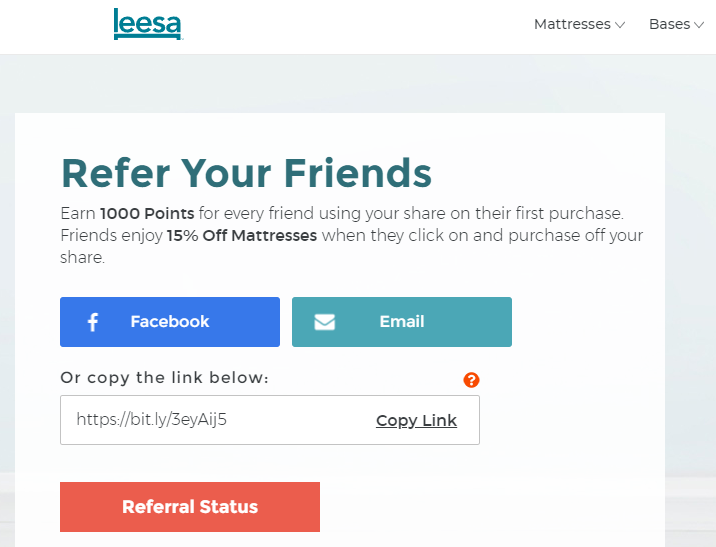Defining and Increasing Customer Lifetime Value
- 31 December 2021
There are two extremes in marketing – aspiring artists who sincerely believe the product they promote has the potential to change the world and number-driven realists focused on ROI and conversions. As in every field, the key to success lies somewhere in the middle.
True heroes know when to allow their creative genius to take over and when to sit back, open the excel sheet, and take a hard look at the numbers.
But which numbers really matter? It is pretty easy to get lost among all the ROIs, CTRs, MAUs, CACs, MRR, and NPSs. As marketers, we have entire dictionaries full of acronyms, but there’s one that matters more than most of the others — CLV, Customer Lifetime Value.
CLV supplies one of the most crucial metrics needed to determine the profitability of your business, whether marketing campaigns are worth the cost and lots of other critical questions. CLV tells you how much you can expect to earn in revenue, on average, from your customers.
So let’s take a closer look at what CLV is all about and look at some easy ways to boost it, starting now.
What is Customer Lifetime Value?
CLV is a straightforward concept. In case you haven’t Googled the term yourself, Customer Lifetime Value refers to one of the core marketing metrics which represents the average revenue you can expect from customers over the lifetime of your relationship. Since no one expects you to calculate it for each separate customer, we instead focus on the average amount of revenue your clients drive to your business.
Some customers will buy from you once and never return while others will stay with you for as long as they need your product. It’s important to remember that these extremes are not what we have in mind with CLV. Again, it’s the average.
How to calculate CLV
The easiest way to calculate your Customer Lifetime Value is to add up the revenue earned from a customer (annual revenue multiplied by the average customer lifespan) and subtract the initial cost of acquiring them.
So if your average customer buys, say, $500 worth of something from you every year and the average customer buys from you for 4 years, that gives you $2000. Now subtract the initial cost of acquiring them and you have your CLV.
Calculating CAC (customer acquisition cost) can be equal parts art and science since there is often some element of guesswork involved. How many people responded directly to this or that ad campaign? How many people bought for the first time because of some promotion? It can be hard to be precise but you can make fairly accurate estimated guesses. Divide the cost of the ad campaign or promotion by the number of new customers it attracted and you have your CAC.
Customer Lifetime Value in eCommerce: why does it matter?
Statistical insights of all kinds can help to inform decision-making processes that impact all aspects of your online store. With CLV, you get help specifically with decisions about which marketing channels you should choose and how much you can spend while remaining profitable.
Once you have calculated your Customer Lifetime Value, you can:
- estimate how many new clients are likely to remain profitable over time
- better segment your clients for personalized offers
- adjust your entire buyer’s journey and marketing strategy
- cut on unnecessary expenses
- drive higher profits with low additional effort
CLV shows how much you are making from a single customer in the long run. As a result, calculating it allows you to estimate how much you should invest into your customer acquisition efforts in the first place. And, as is often the case in business, the higher your customers’ Lifetime Value the better.
That’s why, we’ve figured you’d be interested in some of the most effective strategies to increase CLV and, hence, grow your revenue in the long term.
5 effective ways to increase your Customer Lifetime Value for eCommerce
Arguably, CLV is the most important metric in online retail because it makes it easier to allocate resources and know where you get the best returns on your investment. Increasing your CLV means you have more latitude to try new things and explore different growth channels. Here are five ways to boost your CLV.
Act on customer feedback
One of the easiest ways to improve your product offer and increase your Customer Lifetime Value at the same time is to listen to what your clients have to say about various aspects of your store. Is your store overpriced? Do you stand out with your sustainable packaging? Could you, perhaps, work on personalization better and take your emails down a notch?

ASOS encourages its customers to review their products as soon as the order is delivered
You should actively encourage customers to provide feedback and make it easy to do so. Add fields for product ratings and reviews on your website, send out a survey in your next product newsletter, engage in public conversations with your clients on social media, etc. And once you’ve gathered enough insight, make sure to act upon it. Better engagement leads to better, longer relationships that result in higher CLV.
Reward loyalty
The statistics are clear (and impressive) – customers respond to loyalty programs designed to reward them for their purchases. While there is no one “right” way to organize a loyalty program and working out the organizational demands can be a challenge, they get results. And by “results”, we mean more purchases, more often, which have an obvious effect on CLV.
There is a significant portion of consumers that actively seeks out loyalty programs and many others will gladly join when invited. Compared against the costs of setting up and running a loyalty program, the rewards are great — both as short-terms boosts to sales and long-term increases in CLV.
Invitations to join your loyalty program are also ideal additions to newsletters, banner ads, social media and any other customer touchpoint. Promoting loyalty programs isn’t just a great way to get attention, it’s the perfect way to increase the total amount a given customer spends with you.
Encourage subscription-based services
Another go-to strategy for increasing CLV many businesses turn to is the growing popularity of subscription-based services instead of a one-time purchase. After all, there is no better way to prolong the customers’ profitability than actually encouraging them to purchase from you every month.

Paper Gang offers monthly stationery deliveries & clients never know what they’re going to get
Obviously, not every kind of product fits into this model but it’s worth considering how you might start something like this. If your product has lots of variations, an element of collectibility or an artistic aspect, there could be a way to leverage the power of subscription models.
Here, it’s important to stay creative and open-minded towards your own product line. You can send custom accessories if your specialty is fashion or deliver new tastes if your eCommerce specializes in foods and supplements. Just keep in mind that betting on a subscription-based model will increase your CLV almost by default.
Bet on quality content
Sometimes, convincing your customers to purchase something from you every month is next to impossible, yet we still want to stay on top of their minds. That’s where exquisite content and a clear value proposition come to play. Don’t limit yourself and your eCommerce store to the product alone – experiment with community spirit, educational materials, and simply engaging stories you have.

Patagonia Stories is a place where loyal brand ambassadors get to share their unique travel experiences. So when people talk about the brand, we all know it’s about so much more than just quality clothes.
You can use content to enhance your brand’s story, to connect to your customers on a deeper level, to let them share their own experiences by allowing guest posting, and so much more. The trick here is not to limit the content to promotional marketing materials, but to treat it as a wholesome product of its own.
When your product is part of a lifestyle, you don’t have to work so hard to generate repeat purchases.
Set up a referral program
Last but not least, let’s not forget about the good-old customer retention strategy: referral programs. Like the loyalty programs mentioned earlier, a good number of your customers love referral programs. Adding a referral program to your store is like posting an open invitation to become your brand ambassador. And the best part is – everybody wins.

Leesa is just one example of many eCommerce referral programs done right
The beauty of a well-set-up referral program is that it encourages people to promote your brand for their own benefit, thus significantly increasing their CLV, while bringing new customers into the fold. And you can take it in so many different directions! You can offer free shipping, coupons for next purchases, cash prizes, bonus points – the sky is literally the limit here when it comes to the incentives you offer for referring new customers.
Refer-a-friend module in edrone lets you create programs that make it easy to sign up, share the offer and get rewarded. It’s never been so easy to watch your customer base grow!
Summary
Nurturing new clients and turning them into loyal ones is often a demanding and expensive process. Thanks to focusing on CLV early on, it’s easier to make decisions about which marketing methods deliver the best return for you. Either way, Customer Lifetime Value is an essential KPI for any business because it directly relates to your long-term revenue. After all, as the old saying goes: a long-time, loyal customer is better than two new ones.
About edrone
Creating, publishing and sharing content is a fundamental part of your online presence. edrone supplies you with the communications tools you need to share that content with your subscriber database. We make it easy to use pop-ups, newsletters or automated emails to reach out to your customer base to ask for their feedback. We offer a full toolbox of marketing automation tools needed to gather new subscribers, automated email messaging and manage ongoing campaigns. You’ll find a dedicated loyalty program creator in edrone, which you can use to set up spending thresholds, customized messaging, coupons, analytic insights into performance and more.